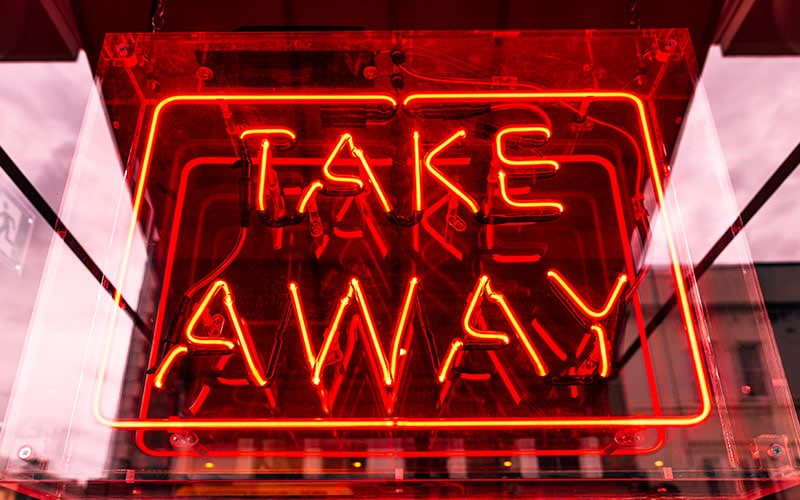Yet even as countries ease lockdowns, things will not go back to “business as usual.” If retailers can rethink and redefine their business, they will not only survive but also thrive. They will have to redefine how they engage with consumers and significantly modify their operating model. E-commerce will be the new norm, and stores of the future will be very different from what they are today. Supply chains will have to be reconfigured to sense real-time demands and manage unpredictability. The following short-term and long-term strategic changes will help them ride the recovery wave and succeed in the post-COVID-19 era.
Redefine engagement
Interacting with consumers, especially in a time of crisis, is important to ensure continued trust. Even small gestures, like saying, “We are open now” or “We will be back” can reassure customers. Consumers are understanding when there are supply chain and stock issues due to this pandemic. But what they dislike is a lack of clarity about them. Retailers should establish continuous communication channels to increase transparency and build trust. Costco has taken a step in this direction and constantly updates inventory status on its website — what is available, what is not, when out-of-stock products will be available, store hours, etc. This in turn helps consumers plan their purchases.
Messaging should be empathetic, truthful and steer away from appearing opportunistic
Large numbers of people have turned to social media to stay connected. Social media can also be a great way to connect with consumers, build brand image and drive sales. Retailers can also understand consumers better and reach out to them with hyper-personalized offerings, cutting out all the marketing noise. As retailers connect with their customers, it is important to keep the messaging empathetic and truthful, and to steer away from appearing opportunistic.
The new environment demands that firms come up with innovative ways of engaging with customers. Chipotle, an American fast-food chain, has devised many innovative initiatives since it had to close down its restaurants. Sensing people’s need to connect during lockdowns, it created a campaign called “Chipotle together,” which encourages people to hang out virtually using apps like Zoom. The campaign has seen a lot of success. Chipotle is also reaching out to people with answers to questions on employees’ health, safe food preparation and restaurant safety. With more than 8.5 million recipients, Chipotle has been able to easily reach out to customers with messaging that best resonates with them.
Strengthen e-commerce
According to a survey by ACI Worldwide, online sales in March were 74% higher compared with the same time last year.1
“We’ve just seen Cyber Monday occur almost every day,” Target’s CEO said recently. “Except we’ve seen twice the volume we’d normally see on a Cyber Monday.”2 Grocery shopping, which is generally done at stores, has also gone digital. Many firms such as Uber, whose business has been temporarily down, have ventured into last-mile connectivity services.
Many physical retailers, for which online channels previously contributed a very small percentage of sales, now have an opportunity to strengthen their digital game.
Retailers should closely monitor their website loads, warehouse capacity and fulfillment adjustments to ensure there are no glitches or breakdowns. Closed stores can be used to store inventory. For example, Lululemon is using its closed stores as fulfillment centers for online orders.3 Even after movement restrictions are lifted, people might prefer to place orders online and pick up goods from stores. Therefore, a dedicated arrangement for store pickups should become a regular feature of business going forward.
Building the store of the future
Considerable operating model changes will have to be made for those physical stores that do open up in the next few weeks and months.
Store hygiene will be of utmost concern for consumers, employees and governments. Regular and thorough sanitization of shop floors, conveyors, restrooms, carts and doors will become mandatory. Among measures to maintain social distancing, shields and face masks for protection will be a must. Tools such as camera-based systems to monitor social distancing in stores will become the new norm. Thermal screening and proper gear to ensure employee safety in warehouses/stores will be become part of the new operating model for retailers.
Touch-free ordering, frictionless checkout and contactless payments and delivery will all be needed
Retailers will have to establish contactless processes for their businesses, from ordering to delivery. Touch-free ordering, frictionless checkout, contactless payments and contactless pickup/delivery will be needed. Where food is serviced, no-touch menus, touch-free ordering, contactless payments, contactless pickup/delivery and tamper-proof packaging should be introduced. We are already seeing companies such as McDonald’s testing virus-proof outlets.4
With new mandates to operate at lower capacities and implement safe distancing, retailers may need to look at other options, such as pop-up stores. Pop-up stores can leverage space in parking lots, with small-format stores that provide easy walk-out technology for contactless shopping.
Updating stock and supply
The extreme fluctuations in retail demand have exposed the fact that supply chains cannot easily manage rapidly changing demand patterns. Sudden surges in online demand have elevated the problem. Last-mile delivery has also been a problem because of lack of manpower, while the procurement and supply of finished goods have been hampered by lack of employees. It has taken weeks to stabilize the supply of essential goods. Sadly, this is not the end of such challenges.
Retailers will soon face another set of problems as they open stores and resume sales of nonessential goods. Firms will have to relook at product assortments in their stores and on digital shelves. This is going to be a monumental problem in the apparel sector, as the inventory in the stores will be out of season.
To avoid situations of out of stock and overstocked, retailers need to keep an ear to the ground going forward to carefully track demand and supply positions. Retailers should closely collaborate with suppliers to continuously exchange information and do real-time demand mapping. This will also bring flexibility to the supply chain. Firms will also need to make alternative supply provisions to mitigate disruptions in the future. Further, retailers should take steps to bring all stakeholders in the supply chain ecosystem together on a single platform. This will give them the ability to easily coordinate with each other and ensure a seamless flow of goods from point of sale to retailer.
Managing the workforce
Retailers are challenged by government guidelines and slumps that are preventing their businesses from operating at full capacity. At the same time, many have been impacted by the dearth of sufficient manpower. Some companies are partnering to shore up capabilities and survive in the long haul. An example is provided by Kroger, which partnered with Sysco to employ the food distribution giant’s furloughed employees.5
While employers are grappling with this workforce situation, they are also worried about their safety and loss of livelihood during this economic downturn. Firms should ensure that employees can easily reach out to them in case of medical emergencies or any other issues. Concrete measures such as thermal screening, hygiene maintenance and availability of protective gear are essential to assure employees of their safety. Regular messages from leadership, constant organizational updates, and channels such as virtual assistants to answer queries anytime can have a comforting effect.
With many employees working from home, retail firms have a chance to facilitate them every step of the way while ensuring business continuity. This requires that firms take a host of steps, such as setting up remote desktops and providing mobile and collaboration tools for seamless connectivity. Company servers should be capable of withstanding a heavy load as the vast majority of workers connect remotely through virtual networks.
Digital productivity tools can help firms ensure efficiency and accountability in this new working environment. Training for newly hired employees and training of existing employees can be delivered through mobile-enabled learning portals to accelerate their induction into new ways of working.
Building resilience
Many stores are being forced to either operate at low capacity or shutter. With razor-thin margins, retailers have started facing cash flow problems. The pandemic has already claimed Neiman Marcus, which filed for bankruptcy in early May. JCPenney is also faring badly. Adidas has reported a 93% plunge in first-quarter profits and has warned of bigger impacts in next-quarter results as lockdowns force stores to close.
Firms need to rapidly evaluate their cash positions and make quick decisions to mitigate losses. Cost takeout initiatives like infrastructure consolidation and asset sell-offs might have to be undertaken quickly. Companies will also see merit in moving to the cloud with pay-per-use or anything-as-a-service models to control costs and capital.
Retail’s business model must be digital first if they are to survive in the new normal
This is why reconfiguring retail’s business model to be digital first is not just an option now; it’s essential for survival. Adapting to the new rules of customer and employee engagement, building a stronger supply chain, equipping themselves for new channels of business — all this is an opportunity for retailers to build a resilient enterprise that can withstand any kind of challenge the future holds.
For the most part, this will require agility, speed and strong leadership within retail organizations. But as the market and industry become used to this “new normal,” the longer-term aim must be to ensure ongoing and consistent resilience. The key to this is ensuring not only digital uptime but also fail-safe security. The increase in digital interactions increases the risk of cyber-threats. As retailers become more digitally focused, they will need to take strict preventive measures and strengthen their cyber defenses. The costs of a breach are exorbitant, and in times when so much strain is being felt across organizations, a breach can also be catastrophic.
Firms should establish security operation centers to detect, analyze and counter any cybersecurity threats. They also need to create awareness among stakeholders inside and outside their organization to ensure that their network of suppliers and partners is secure. Only then can true resilience exist in retail’s digital post-COVID-19 future.
References
- Covid-19: Huge growth in eCommerce sales during March, James Coker, April 7, 2020, Essential Retail
- Target’s same-store sales surge so far in first quarter as shoppers go online , M. Corey Goldman, April 23, 2020, The Street
- Lululemon pivots to focus on digital, faced with store closures due to coronavirus , Jamie Grill-Goodman, March 30, 2020, RIS
- McDonald’s designed a new type of restaurant for the coronavirus era in Europe — here’s what it’s like to visit , Kate Taylor, May 4, 2020, Business Insider
- Sysco and the Kroger Co. join forces to meet critical food supply needs and keep associates working, March 27, 2020, Sysco





